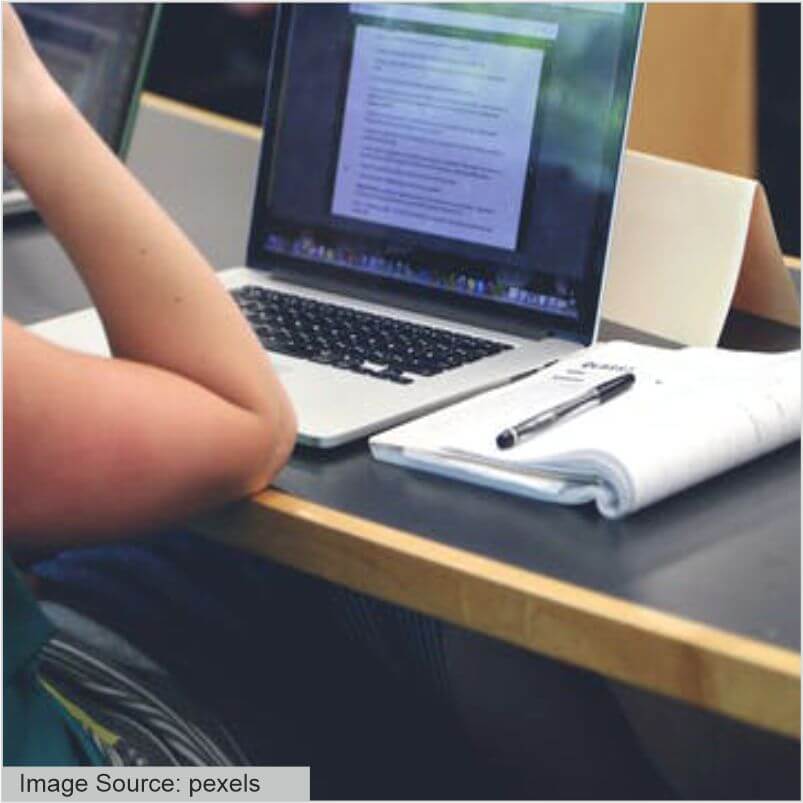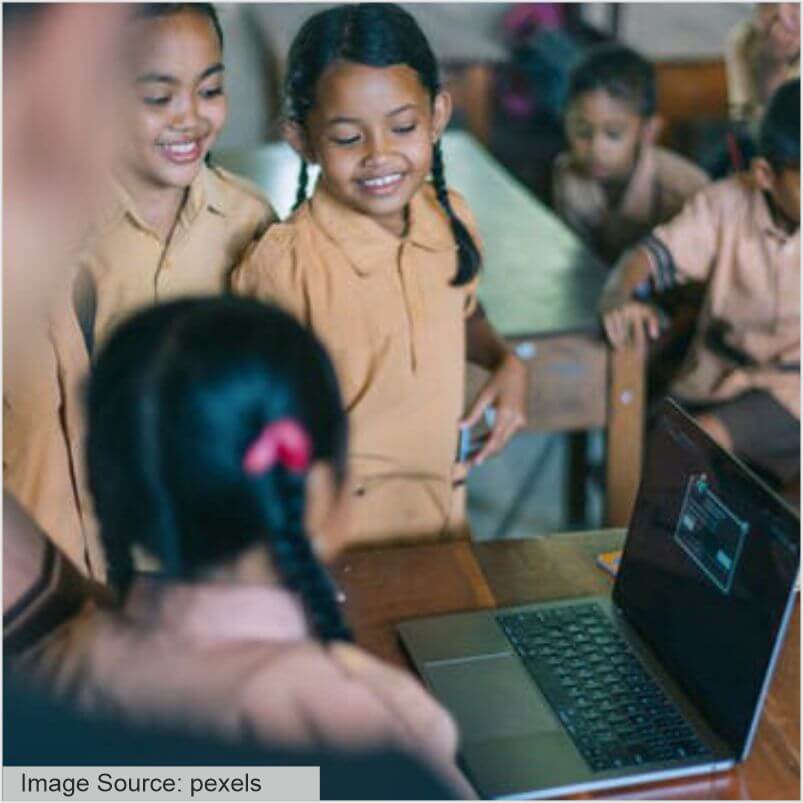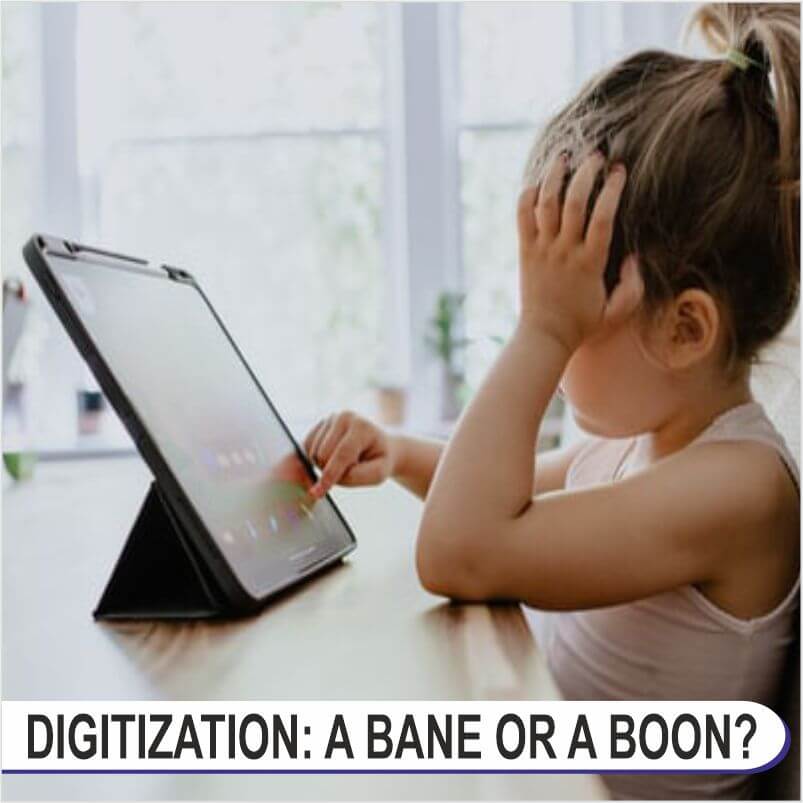Digitisation is on the rise. Government of India’s ‘Digital India’ campaign was launched to improve the country’s online infrastructure and make the country digitally empowered. With around a billion internet subscribers, India is one of the largest and fastest-growing markets for digital consumers, but adoption is uneven among businesses.
The COVID-19 pandemic has transformed the education industry forever. The lockdown imposed due to the pandemic caused many schools to shut down, all across the world. Globally, over 1.2 billion children were out of the classroom. According to the United Nations, the COVID-19 effect led to closures of schools and other learning spaces have impacted 94 percent of the world’s student population, up to 99 percent in low and lower-middle-income countries.
Consequently, education has changed drastically, with the peculiar rise of e-learning, whereby teaching is undertaken remotely and on digital platforms. Schools have resorted to many online platforms like Google Meet, Zoom, and Microsoft Teams to conduct their lectures. This shift from in-person classroom teaching to online learning has led to multiple outcomes, both positive and negative.
NEGATIVE IMPACT

Not all students across India are familiar with the way digital platforms function. This concept is not only new to these kids but also to their teachers, and is somewhat responsible for creating some adverse effects on education. The most affected and vulnerable groups are the children, youths, and adults living in poor or rural areas, due to a lack of study materials, in this case, laptops, smartphones, and an internet connection. Only 24 percent of households have access to the internet, according to a 2019 government survey. In rural India, the numbers are far lower, with only 4 percent of households having access.
Closures of educational institutions hinder the provision of essential services to children and communities, including access to nutritious food in form of mid-day meals, affect the ability of many parents to work and increase risks of violence against women and girls. COVID-19 is building psychological distress among vulnerable college students, as they are forced to stay home, along with worsening financial situations, lifestyle changes, family situations, and time spent on various activities.
The lockdown effect has caused limited class interaction and inefficient timetables significantly affected the satisfaction levels among students. The peer-to-peer impact in the school environment which motivated students to work hard and learn social skills has been absent in an online setting. The financial burden on parents to pay children's school fees in the middle of a pandemic-induced economic pressure also forced many kids to drop out of schools. Many low budget schools got shut down.
EXAM UNCERTAINTY

As uncertainty looms over examinations, many students are going through an enormous amount of mental distress. Most students study with the exam dates in mind. They calculate the number of days left and divide the syllabus accordingly and even build up their tempo as the dates approach. Many students are unsure if the exams will be conducted or not. Preparing for board examinations extensively throughout the year, despite the challenges of the pandemic and under the impact of online classes during the lockdown, only to be told that the examinations are canceled creates a feeling of mistrust and frustration among them. According to a study, a total 53.1%, 37.2% and 24.3% of students had symptoms of depression, anxiety and stress respectively, with varying severities during the COVID-19 lockdown.
POSITIVE IMPACT

Though there were many negative impacts from the COVID-19 pandemic on the field of education, there were also some positive impacts that may have taken the education system and its methods a step higher. The pandemic has opened gates to innovative methods of communication of knowledge across the globe.
For those who have access to the right technology and internet services, there is evidence that learning online can be more effective in several ways. Research shows that on average, students retain 25-60 percent more material when learning online compared to only 8-10 percent in a classroom. This is mostly due to the students being able to learn faster online; e-learning requires 40-60 percent less time to learn than in a traditional classroom setting because students can learn at their own pace, going back and re-reading, skipping, or accelerating through concepts as they choose.
The expenses on travel and the purchase of study materials have gone down, and it could result in savings during these hard times. The e-learning method has enabled many teachers to reach out to students more efficiently and effectively through chat groups, video meetings, voting, and also document sharing. Teachers are incorporating the use of multimedia to make learning more interesting by capturing students' attention.
FUTURE OF EDTECH IN INDIA POST COVID19

With a boost in e-learning, digitization in India is on the rise. An advantageous thing is that India is prepared with the extensive and robust 4G Network and affordable data, in virtually most parts of the country. India’s Educational Technology (EdTech) industry ranks the second largest in the world, and its diffusion in the country has further increased due to COVID-19. The Ministry of Education attempted to modernize the future of Online learning in India by launching the National Educational Alliance for Technology (NEAT 2.0), through its Implementing Agency, All India Council for Technical Education (AICTE) in February 2021. NEAT 2.0 helps to verify, aggregate, and deliver EdTech solutions directly to the students, thus giving them a huge choice to select a technological requirement that will suit their requirements, which will, in turn, improve the overall learning outcome. The future of the EdTech market looks promising and shall be advancing in terms of technology.
CONCLUSION
To conclude, it can be said that certain challenges need to be overcome to make online learning a better experience for the students. Many found that global education and worldwide exposure to ideas are available for those who seek after it. The National Education Policy, released by the Union government in July 2020, has also emphasized the importance of online education, blended with the traditional model. Overall, people are now more inclined to online learning.
